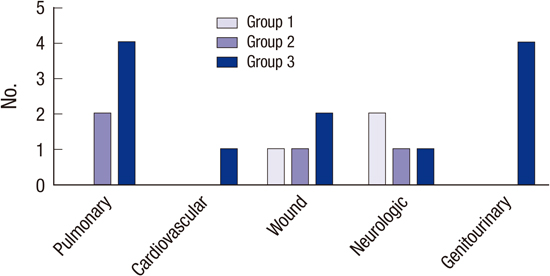2. Muir CS, Fraumeni JF Jr, Doll R. The interpretation of time trends. Cancer Surv. 1994; 19-20:5–21.
3. Olmi P, Ausili-Cefaro G. Radiotherapy in the elderly: a multicentric prospective study on 2060 patients referred to 37 Italian radiation therapy centers. Rays. 1997; 22:53–56.
4. Balducci L. Management of cancer in the elderly. Oncology (Williston Park). 2006; 20:135–143.
5. Mountzios G. Optimal management of the elderly patient with head and neck cancer: issues regarding surgery, irradiation and chemotherapy. World J Clin Oncol. 2015; 6:7–15.
6. Pignon T, Horiot JC, Van den Bogaert W, Van Glabbeke M, Scalliet P. No age limit for radical radiotherapy in head and neck tumours. Eur J Cancer. 1996; 32:2075–2081.
7. Ang KK, Harris J, Wheeler R, Weber R, Rosenthal DI, Nguyen-Tân PF, Westra WH, Chung CH, Jordan RC, Lu C, et al. Human papillomavirus and survival of patients with oropharyngeal cancer. N Engl J Med. 2010; 363:24–35.
8. Koch WM, Patel H, Brennan J, Boyle JO, Sidransky D. Squamous cell carcinoma of the head and neck in the elderly. Arch Otolaryngol Head Neck Surg. 1995; 121:262–265.
9. Jones PA. DNA methylation errors and cancer. Cancer Res. 1996; 56:2463–2467.
10. Italiano A, Ortholan C, Dassonville O, Poissonnet G, Thariat J, Benezery K, Vallicioni J, Peyrade F, Marcy PY, Bensadoun RJ. Head and neck squamous cell carcinoma in patients aged ≥ 80 years: patterns of care and survival. Cancer. 2008; 113:3160–3168.
11. Teymoortash A, Wulf H, Werner JA. Head and neck cancer surgery in the elderly. Laryngorhinootologie. 2002; 81:293–298.
12. McGuirt WF, Loevy S, McCabe BF, Krause CJ. The risks of major head and neck surgery in the aged population. Laryngoscope. 1977; 87:1378–1382.
13. Piccirillo JF. Importance of comorbidity in head and neck cancer. Laryngoscope. 2000; 110:593–602.
14. Thomas M, George NA, Gowri BP, George PS, Sebastian P. Comparative evaluation of ASA classification and ACE-27 index as morbidity scoring systems in oncosurgeries. Indian J Anaesth. 2010; 54:219–225.
15. Ferrier MB, Spuesens EB, Le Cessie S, Baatenburg de Jong RJ. Comorbidity as a major risk factor for mortality and complications in head and neck surgery. Arch Otolaryngol Head Neck Surg. 2005; 131:27–32.
16. Edge SB, Compton CC. The American Joint Committee on Cancer: the 7th edition of the AJCC cancer staging manual and the future of TNM. Ann Surg Oncol. 2010; 17:1471–1474.
17. Sarris EG, Harrington KJ, Saif MW, Syrigos KN. Multimodal treatment strategies for elderly patients with head and neck cancer. Cancer Treat Rev. 2014; 40:465–475.
18. Vercelli M, Parodi S, Serraino D. Overall cancer incidence and mortality trends among elderly and adult Europeans. Crit Rev Oncol Hematol. 1998; 27:87–96.
19. Wedding U, Bokemeyer C, Meran JG; Working Group Geriatric Oncology of the German Society for Haematology and Oncology (DGHO). Austrian Society for Haematology and Oncology (OGHO); German Society for Geriatrics (DGG). Elderly patients with acute myeloid leukaemia: characteristics in biology, patients and treatment. Recommendations of the Working Group Geriatric Oncology of the German Society for Haematology and Oncology (DGHO), the Austrian Society for Haematology and Oncology (OGHO) and the German Society for Geriatrics (DGG). Onkologie. 2004; 27:72–82.
20. Balducci L. Geriatric oncology: challenges for the new century. Eur J Cancer. 2000; 36:1741–1754.
21. Derks W, de Leeuw JR, Hordijk GJ, Winnubst JA. Reasons for non-standard treatment in elderly patients with advanced head and neck cancer. Eur Arch Otorhinolaryngol. 2005; 262:21–26.
22. Yamakawa M, Shiojima K, Takahashi M, Saito Y, Matsumoto H, Mitsuhashi N, Niibe H. Radiation therapy for esophageal cancer in patients over 80 years old. Int J Radiat Oncol Biol Phys. 1994; 30:1225–1232.
23. Schilcher B, Curschmann J. Clinical results of radiotherapy in 140 elderly patients treated at Basel University Hospital between 1980 and 1985. Int J Radiat Oncol Biol Phys. 1995; 33:774.
24. Sharma A, Madan R, Kumar R, Sagar P, Kamal VK, Thakar A, Sharma A, Mohanti BK. Compliance to therapy-elderly head and neck carcinoma patients. Can Geriatr J. 2014; 17:83–87.
25. Howard MA, Cordeiro PG, Disa J, Samson W, Gonen M, Schoelle RN, Mehrara B. Free tissue transfer in the elderly: incidence of perioperative complications following microsurgical reconstruction of 197 septuagenarians and octogenarians. Plast Reconstr Surg. 2005; 116:1659–1668.











 PDF
PDF ePub
ePub Citation
Citation Print
Print




 XML Download
XML Download